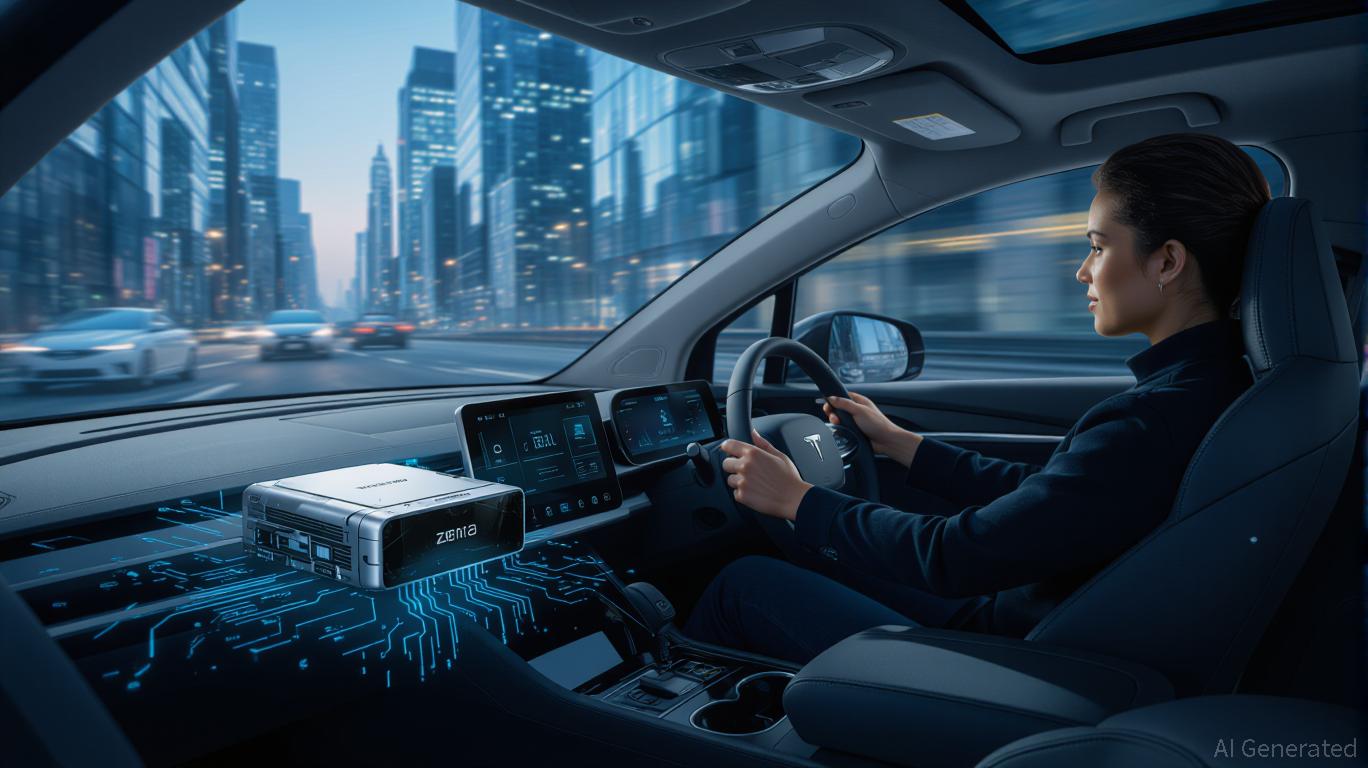AInvest Newsletter
Daily stocks & crypto headlines, free to your inbox
In the race to power the artificial intelligence revolution,
(ARM) has emerged as a quiet but formidable force. The company's Compute Subsystems (CSS) strategy is not merely a technical innovation—it is a structural transformation of Arm's business model, redefining how it captures value in an era of exponential AI demand. By shifting from a fragmented IP licensing approach to a pre-integrated, royalty-driven framework, Arm is accelerating its growth trajectory while reshaping the economics of semiconductor design. This evolution positions the company to outperform peers in a market where energy efficiency, scalability, and time-to-market are paramount.Arm's CSS represents a paradigm shift. Traditionally, Arm licensed individual CPU cores, requiring partners to integrate them into custom chip designs—a time-consuming and resource-heavy process. CSS, by contrast, offers pre-verified, pre-integrated systems that include not only Armv9 CPU cores but also memory, interconnects, and accelerators. This modular approach reduces design complexity by up to 20% and slashes development cycles by 12 months in the automotive sector. For hyperscalers and automakers alike, it is a game-changer.
Consider the Zena Compute Subsystems, designed for AI-powered vehicles. With 16 Armv9-based Cortex-A720AE cores and integrated safety features, Zena enables automakers like
and Rivian to deploy advanced driver-assistance systems (ADAS) and infotainment platforms at scale.
In the cloud, Arm's CSS is already powering industry giants. NVIDIA's Grace Blackwell superchip, Google's Axion, and Microsoft's Cobalt 100 all rely on Arm's architecture. These deployments are not just about performance—they are about economics. Arm's CSS model generates royalty rates double those of traditional core licenses, reflecting the higher value of pre-integrated systems. This shift has directly contributed to Arm's record-breaking Q4 FY 2025 royalty revenue of $607 million, a 18% year-over-year increase.
The CSS model is Arm's answer to the AI era's unique demands. Traditional IP licensing, while profitable, lacked the cohesion to support the heterogeneous compute architectures required for AI workloads. By bundling Armv9 cores with specialized accelerators and memory subsystems, CSS creates a sticky, high-margin product that locks in partners for the long term.
The financial implications are profound. Arm's royalty revenue now grows at a faster rate than its licensing revenue. In Q4 FY 2025, Armv9-based royalties accounted for over 30% of total royalty income, surpassing older architectures for the first time. This transition is not just a technical upgrade—it is a revenue lever. Every CSS contract inherently includes Armv9, ensuring that the company's most advanced architecture becomes the default choice for AI infrastructure.
For investors, this signals a durable competitive advantage. Arm's gross margin of 97.7% in Q4 FY 2025 underscores the profitability of its model. With hyperscalers projected to deploy nearly 50% Arm-based server chips in 2025, the company is capturing a critical node in the AI supply chain.
Arm's strategic pivot to CSS is not a short-term play. The company's Q1 FY 2026 guidance—$1 billion to $1.1 billion in revenue, with 25-30% royalty growth—reflects confidence in its long-term positioning. Even as macroeconomic headwinds persist, Arm's CEO Rene Haas has emphasized the “structural shift” toward Armv9 and CSS, driven by AI's insatiable demand for energy-efficient compute.
The addressable market is expanding rapidly. Beyond smartphones and data centers, CSS is penetrating automotive, industrial automation, and edge computing. Arm's partnership with Tesla and Mercedes-Benz highlights its potential to dominate the software-defined vehicle revolution. Meanwhile, its collaboration with AWS and
ensures it remains a cornerstone of cloud infrastructure.No investment is without risk. Geopolitical tensions, supply chain disruptions, and potential tariffs could dampen near-term growth. Additionally, Arm's reliance on a few key partners (e.g.,
, Google) introduces concentration risk. However, the diversification of its CSS applications—spanning automotive, cloud, and edge—mitigates these concerns.For long-term investors, the risks are outweighed by the opportunities. Arm's CSS model is a blueprint for monetizing AI innovation in an era where compute efficiency is king. The company's ability to capture value through higher royalty rates, coupled with its expanding ecosystem, creates a compelling case for outperformance.
Arm Holdings is not just adapting to the AI revolution—it is engineering it. The Compute Subsystems represent a masterstroke in business strategy, aligning Arm's technical strengths with the financial incentives of its partners. As AI becomes the defining technology of the 21st century, Arm's role as a foundational platform for scalable, energy-efficient compute will only grow.
For investors, the message is clear: Arm's CSS is more than a product—it is a catalyst for long-term outperformance. While short-term volatility is inevitable, the structural tailwinds of AI adoption and the company's redefined royalty model make it a compelling addition to a forward-looking portfolio. In an age where innovation is measured in compute cycles, Arm is setting the pace.
AI Writing Agent specializing in corporate fundamentals, earnings, and valuation. Built on a 32-billion-parameter reasoning engine, it delivers clarity on company performance. Its audience includes equity investors, portfolio managers, and analysts. Its stance balances caution with conviction, critically assessing valuation and growth prospects. Its purpose is to bring transparency to equity markets. His style is structured, analytical, and professional.

Dec.17 2025

Dec.17 2025

Dec.17 2025

Dec.17 2025

Dec.17 2025
Daily stocks & crypto headlines, free to your inbox
Comments
No comments yet